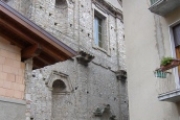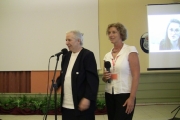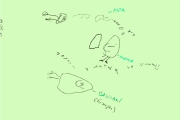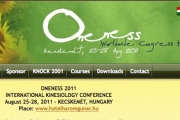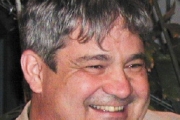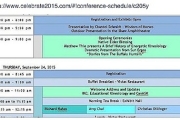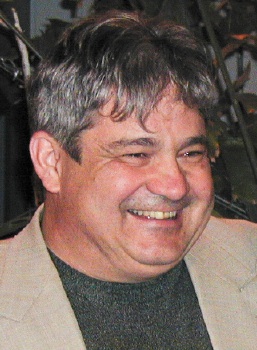
On November 12, 2011, Richard Utt, L.Ac. passed away after a long illness. He was 10 days shy of his 61st birthday.
Richard was one of the great innovators in the field of Energy Kinesiology. He is the originator of Applied Physiology, highly regarded as one of the most professional modalities in a field that was created initially for lay people. His devotion to research of the body, kinesiology,and the integration of the physical with the metaphysical, led to his unique approach in helping people to heal from even the most complex of illnesses.
Richard’s journey into Energy Kinesiology came through his own health challenges. Suffering from a number of illnesses and unexplained physical maladies, including brain swelling, Richard found his way to the office of Dr. Sheldon Deal, D.C., N.D., one of the original “DirtyDozen” of Applied Kinesiology.
Through his ongoing treatment regimen, involving spending many hours in Dr. Deal’s office, Richard passed the time by reading books on Applied Kinesiology, Anatomy/ Physiology, Neurology and anything else related to the work he was experiencing. From that, combined with his career as an airplane mechanic in the Air Force, with which he served in Vietnam, he began to formulate ideas that developed into the kinesiological body of work that became Applied Physiology.

S.Deal, R.Utt, J.This, C.Krebs, G.Goodheart, Schmidt, B.Dewe, P.Dennison
To name just a few of his contributions to the field, some of his early research led to concepts and techniques that became standards in the field, many of which were then adopted by other Energy Kinesiology modalities:
- 1. Monitoring muscles in both contraction and extension.
- 2. Using spindle cells to identify 7 states of muscle stress, including the concept of overfacilitation, showing that a locked (“strong”) muscle did not necessarily mean it was in balance.
- 3. Formatting – the use of finger modes and pause lock together to ask more complex questions of the body as a means of going deeper to get more meaningful answers. This developed the language of kinesiology to go further than it had prior to that. It also led him to develop a method of accessing specific brain areas and their functions, spawning, decades later, continued advanced methods of accessing the brain.
- 4. Expanding the 5 Element model of Chinese Medicine to 7 Elements, drawing upon other Asian philosophies to allow an integration of the physical and metaphysical within one coherent
- system.
- 5. The holographic model of Applied Physiology – drawing upon the ancient philosophy of how everything relates to everything else, and building that into an accessible system to pinpoint
- imbalances and direct healing modalities more specifically to those relationships.
- 6. Researching the use of tuning forks specifically related to the meridians of Chinese Medicine and integrating them with many healing modalities.
- 7. The 7 Chi Keys – what Richard would often refer to as his “Crown Jewel” – a method of balancing the 7 major chakras using the acupressure system of Chinese Medicine. This technique literally came to him in a series of dreams, from which he did his research and developed the technique that was widely revered as being well ahead of its time.
As so many innovators tend to be, Richard was a complex person with a mind to do things in a particular way. He quickly built a reputation for helping people with multiple sclerosis, stroke victims, and other serious neurological problems achieve results that doctors had said would not be possible. He continued his own practice until the last couple of years when his energy was not able to sustain his ability to work. One of his last clients was a child from Italy that was born with only 10% white matter in his brain, and whose parents (the father of which was a prominent doctor himself ) were told there could be nothing done. After a couple of years of sustained treatment, the child had reached 90% white matter, and a level of function that could only be described as miraculous.
Richard was known for his flamboyant presentations, wowing people at the annual Touch for Health, and later also the Energy Kinesiology Association and overseas conferences. His reputation grew worldwide, and Applied Physiology has flourished throughout Europe and in Australia, and is now also in Japan. Over the years, other kinesiology modalities grew from the concepts of Applied Physiology, many of which are considered today to be on the leading edge of the field, including LEAP, SIPS, and Neuroenergetic Kinesiology.
In the last decade, Richard ran into more health issues. A serious heart attack in 2000 would have taken out most people, yet he managed to survive and continue on despite a botched surgery that complicated his health for several years after. In the last couple of years, he regularly fought off infections, and was told several times he would not survive more than a few more days. And yet he managed to turn around and surprise everyone. This cat had way more than 9 lives. Eventually, however, he was unable to fight off the inevitable, as his body had simply taken all it could handle. He predicted a few months ago that he would pass in November (though being told many times by doctors he wouldn’t make it that long). The
only surprise beyond that, given his on-going love of numbers and patterns that he used often in the development of his work, was that he didn’t pass on 11/11/11, missing it by 5 hours.
Richard Utt originally hailed from Flint, Michigan, and later found his way to Tucson, Arizona via his Air Force duty. He settled in Tucson, and found the International Institute of Applied Physiology there. The AP office will continue to operate under the faithful eye of his longtime manager and graphic designer, EJ Ocheltree, as well as his direct family that survives him wife Isaura and 2 children, Hector and Ana.
GESCHRIEBEN VON: ADAM LEHMANN, USA



